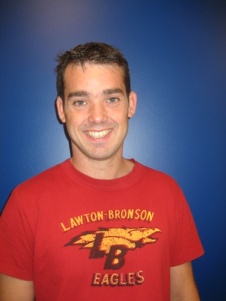Controlling light emission with plasmonic nanostructures
Promotion date: 6 November 2008
Thesis advisor: prof. dr. L. (Kobus) Kuipers
| This thesis discusses interactions of light and emitters with metallic (nano-)structures. Investigations (theoretical and experimental) are carried out for a lens specifically for near fields, which allows imaging of the near field. The lens is composed of a thin metal film on a dielectric surface. A method is presented that can directly evaluate the performance of a metallic film as a lens, at optical frequencies. With a near-field optical probe, acting as a source, experimental data prove that the performance of a silver film as a lens improves with decreasing wavelength. Furthermore, a near-field method is discussed for reversible and a priori control of the polarization of radiation emitted by a single emitter, such as a molecule. Placing a metal nanoscale object, close to an emitter, alters its emission properties, such that the polarization of the emission in the far field can be chosen at will. Finally, the behaviour of emitters embedded in a periodic array of rectangular holes in a metallic film is discussed. |
What was the initial subject of research in this thesis project?
All issues concern nano-optics. My research contributed a lot of understanding on fundamental issues. Applications can follow in the future.
First of all, I was interested in constructing a “superlens” for visible light. A superlens is a lens composed of a material that has a negative index of refraction. As a result, Snell’s law reverses and rays of light entering the material would refract the wrong way.
That’s a very exciting phenomenon, However, the creation of such a material involves controlling the magnetic response of the material – something that is hard to do for materials interacting with visible light. As a compromise, we’ve shown that a metallic film can work as a lens for light with spatial dimensions of several tens of nanometers. It seemed impossible to do at first, but finally we succeeded in making and testing this kind of “poor man’s superlens”.
Other phenomena were investigated also.
Yes. For example, placing a sharp-ended metal-coated near-field probe near a single fluorescent molecule, we observed a mirroring effect of the molecule in the metal of the probe. As a consequence of this mirror, the direction of the polarization of the fluorescence emitted by the molecule alters, depending on the location of the probe.
Also we experimented with quantum dots caught in a 20x20 structure of rectangular holes, where the holes were cut from a metallic film. We could form the holes very precisely, by using the focused ion beam, as a kind of nano-sized drill. These quantum dots emitted unexpectedly large quantities of light, if the geometry of the structure was slightly altered.
Does academic research suit you best?
I see myself as an academic researcher. Already as a child I wanted to know ... why? That has never left me.
Therefore I’m in the process of writing a new research proposal for a VENI, to further investigate issues I came across in this and in other projects. In the mean time, I’m on the lookout for a suitable position.
MESA+ is a good place to continue working. Going abroad is less necessary to me. It is important for me to function in a group, where I feel at home and free, and sparring with my research colleagues at the UT and the AMOLF institute in Amsterdam.
What does it take to be an academic researcher?
A lot of endurance. Sometimes you have bad luck, while colleagues have success. Then you have to say to yourself: the best research is yet to come. In the promotion project I learned a lot of things: knowledge, techniques, but also at a personal level. I am an independent researcher now, but I also like to think of things to do together with colleagues and other groups. Probably, that’s the biggest personal gain from my thesis project.
What challenges does MESA+ face in the future, you think?
MESA+ is a great institution. You find all kind of researchers, from experts of IC-fabrication to scientists researching fluid-handling in nano-circuits.
However, some techniques and equipment should be developed more. For example, e-beam lithography is underdeveloped, I feel. MESA+ has the facilities but they are not capable enough. In keeping up with Japanese research concerning photonic crystal fabrication, for instance, we need to improve quickly. Also for the etching of nano-channels and –gaps, this technique is important.

